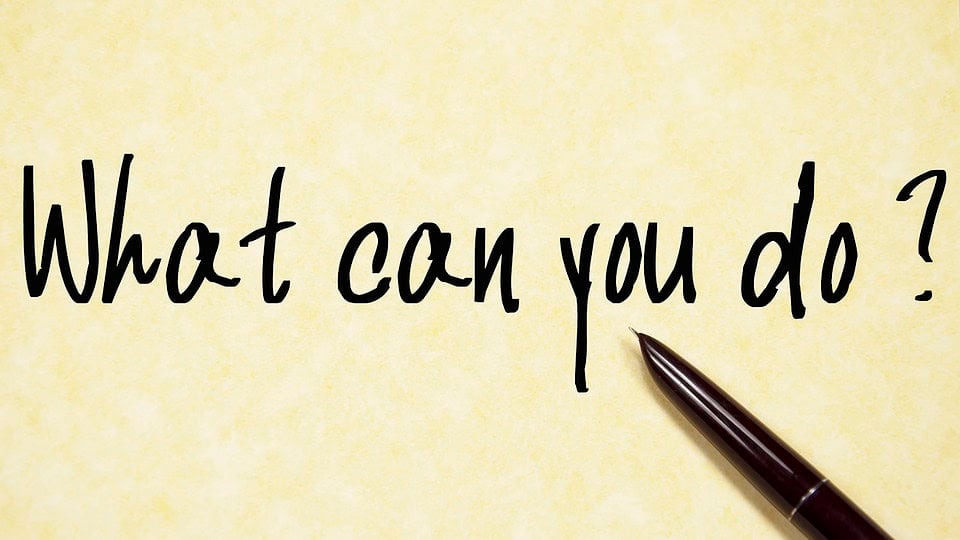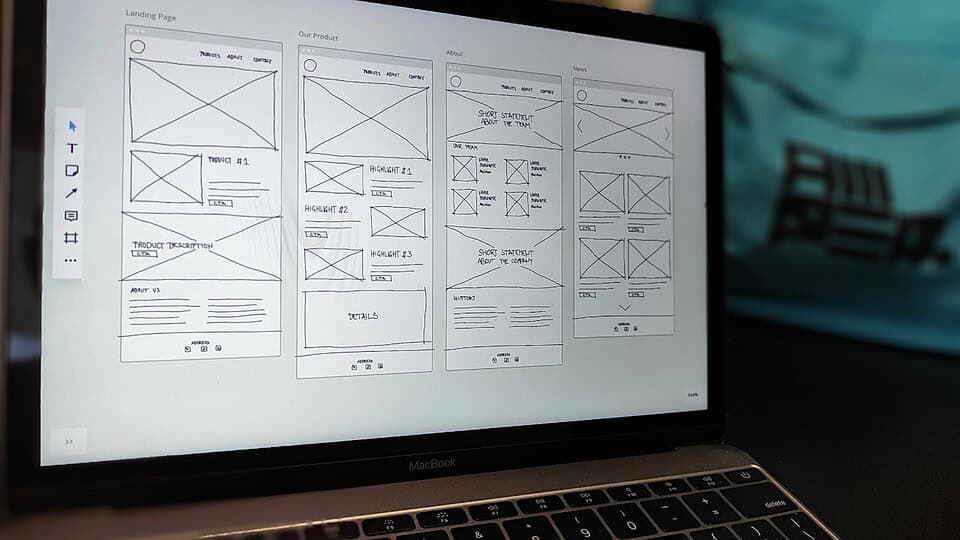
Growing businesses often find themselves inspired by competitors’ websites, wondering what design elements they can legally adopt for their own digital presence. While admiring successful websites is natural, understanding the legal boundaries between inspiration and infringement is crucial for making informed business decisions that protect your company’s reputation and avoid costly legal disputes.
Short answer: Copying exact website designs without permission typically crosses legal boundaries and creates business risks that growing companies cannot afford.
Copyright protection is automatic in most jurisdictions – the moment creative content is documented, it receives legal protection. For businesses investing in their digital infrastructure, understanding these legal frameworks helps make strategic decisions about website development that support long-term growth without legal complications.
Key Takeaways
- Generic layouts and common website functions are not protected by copyright law
- Original visual elements, custom graphics, and unique content arrangements receive automatic copyright protection
- Drawing inspiration from multiple sources while creating original implementations is legally acceptable
- DMCA takedown notices can remove infringing content and harm business operations
- Professional designers can help transform inspiration into legally distinct, brand-appropriate solutions
What Copyright Law Protects in Website Design
Copyright law in most jurisdictions automatically protects original creative works without requiring formal registration. For website owners, this means protection extends to specific creative expressions while leaving functional elements available for general use.
Protected Elements
Website copyright protection covers original visual designs, custom graphics, unique content arrangements, and bespoke code implementations. Many jurisdictions recognise joint authorship where creative contributions cannot be separated, with joint owners typically holding equal shares unless agreements state otherwise.
Original photographs, illustrations, written content, and distinctive visual layouts receive protection from the moment of creation. This protection helps businesses maintain competitive advantages through unique digital presentations that reflect their brand identity.
Unprotected Elements
Standard industry practices such as navigation menus, contact forms, and basic website structures lack the originality required for copyright protection. These functional elements represent common solutions to universal web design challenges.
General concepts, ideas, and standard layout patterns remain available for use. The three-column layout, hero image sections, or footer designs represent established conventions rather than protected creative expressions.
Understanding the Distinction: Inspiration Versus Imitation

The legal boundary between acceptable inspiration and problematic imitation centres on originality and substantial similarity. This distinction affects business decisions about website development and brand presentation.
Acceptable Inspiration
Drawing ideas from multiple sources, understanding effective user experience patterns, and reimagining functionality for your specific audience represent standard business practice. Successful companies analyse market leaders to understand what creates effective digital experiences.
Inspiration involves studying how other businesses solve similar challenges, then developing your own solutions that reflect your brand values and serve your customers’ needs. This approach supports business growth by learning from proven strategies while maintaining originality.
Problematic Imitation
Creating works that are substantially similar to existing copyrighted material constitutes infringement, even when the implementation differs. Direct copying of visual designs, colour schemes, or layout arrangements creates legal risks that can damage business operations.
Reproducing another company’s design approach so closely that visitors might confuse the two websites represents problematic imitation. This confusion harms both businesses and creates potential trademark issues that extend beyond copyright concerns.
Business Growth Considerations for Website Design
Growing businesses need digital assets that scale with their operations while maintaining legal compliance. Website design decisions impact long-term business value and operational efficiency.
Strategic Asset Development
Your website represents a significant business asset that should appreciate over time. Copyright owners have exclusive economic rights, including the right to copy, publish, communicate and publicly perform their material. Investing in original design creates intellectual property that supports business valuation and competitive positioning.
Original websites provide opportunities for licensing, franchising, or other business expansion strategies. Companies with distinctive digital brands can leverage these assets across multiple revenue streams.
Risk Management
DMCA notices can lead to content removal, account suspension, and negative impacts on online presence. For growing businesses, these disruptions affect customer acquisition, sales processes, and operational continuity.
Legal disputes consume resources that growing companies need for expansion and development. Proactive design strategies that avoid infringement issues protect these resources for business growth activities.
Legal Consequences of Website Design Copying
Understanding potential consequences helps businesses make informed decisions about design approaches and risk tolerance.
DMCA Takedown Processes

DMCA takedown notices provide copyright holders with mechanisms to request the removal of infringing content from websites and online platforms. These notices can affect website availability and search engine rankings.
Valid DMCA notices must contain specific information, including copyright owner identification, description of infringed work, and statements made under penalty of perjury. The formal nature of these processes creates serious business implications.
Legal Action and Financial Impact
Beyond takedown notices, copyright infringement can result in civil lawsuits seeking damages, injunctive relief, and legal fees. Copyright assignments typically require written agreements, and exclusive licences generally must be formally documented, emphasising the serious nature of these rights.
Businesses may face claims for lost profits, statutory damages, or licensing fees. These financial impacts can significantly affect cash flow and growth investments for developing companies.
Reputation and Brand Damage
Being publicly identified as copying competitors’ designs damages business credibility and brand reputation. This reputational harm affects customer trust, partnership opportunities, and market positioning.
Search engines may also penalise websites involved in copyright disputes, reducing organic visibility and customer acquisition effectiveness.
Best Practices for Original Website Design

Developing original designs that avoid legal issues while supporting business objectives requires strategic planning and professional expertise.
Professional Design Partnership
Working with experienced website strategists helps translate business requirements into legally compliant, effective designs. Professional designers understand both creative possibilities and legal boundaries.
Experienced teams can evaluate inspiration sources, identify potential issues, and develop original solutions that capture desired aesthetics while maintaining legal distinctiveness. This expertise protects businesses from unintentional infringement while ensuring design effectiveness.
Documentation and Process
Maintaining detailed records of the design process supports intellectual property protection and demonstrates original creation. Document inspiration sources, creative decisions, and development stages to establish independent creation.
This documentation becomes valuable if questions arise about design originality or if competitors claim infringement of your work. Clear records support your position in any disputes.
Strategic Design Approach
Focus on solving your specific business challenges rather than replicating competitors’ solutions. Understanding your target audience, business objectives, and unique value proposition guides design decisions that naturally differentiate your website.
Consider how design elements support business processes, customer journeys, and growth objectives. This business-focused approach creates naturally original solutions that serve your specific requirements.
Professional Ethics in Web Design
When clients request designs that closely mirror competitors’ websites, professional developers have a responsibility to guide them towards original solutions that avoid legal complications. This ethical approach protects both the business and the development team from potential disputes whilst creating stronger brand differentiation.
Protecting Your Website Design Investment

Once you have invested in original design, protecting this intellectual property becomes a business priority that supports long-term value creation.
Copyright Documentation
Website terms of use should clearly specify copyright ownership and permitted uses of content. Clear copyright notices and terms of use establish your ownership claims and usage boundaries.
Changes in copyright law globally, including evolving regulations around AI-generated content, emphasise the importance of documenting human creative contribution. Proper documentation becomes increasingly important as AI tools become common in design processes.
Monitoring and Detection
Regular monitoring of your industry helps identify potential copying of your designs. The rise of AI-powered tools has made website copying faster and easier, making proactive monitoring more important than ever for businesses protecting their digital assets.
Several tools can help detect unauthorised copying of your visual content:
Reverse Image Search Tools: Google Images, TinEye, and similar services can identify where your images appear across the internet, helping locate unauthorised usage.
Website Monitoring Services: Tools like Copyscape and Plagiarism Checker can scan for copied text content and similar website structures.
Design Pattern Detection: Regular industry monitoring helps identify when competitors adopt suspiciously similar design approaches or user interface elements.
Social Media Monitoring: Platforms often reveal when businesses showcase copied designs or reference your website as inspiration.
Enforcement and Response
When infringement occurs, responding promptly protects your rights and demonstrates active enforcement. This consistent approach strengthens your intellectual property position over time.
What to Do If Your Website Is Copied
If you discover unauthorised copying of your website design, take these measured steps:
Document the Infringement: Capture screenshots and preserve evidence of the copied elements, noting dates and specific similarities to your original work.
Review Your Rights: Confirm your ownership of the copied elements and assess whether the copying constitutes substantial similarity rather than common industry practices.
Contact the Infringing Party: Many copying situations result from misunderstanding rather than malicious intent. A professional communication often resolves issues without escalation.
Issue Formal Notices: If direct contact proves unsuccessful, formal cease and desist letters or DMCA notices may be necessary.
Seek Professional Guidance: For significant infringement or unresponsive parties, legal consultation helps determine appropriate next steps and potential remedies.
Terms of Use and Licensing
Develop comprehensive terms of use that specify how others may interact with your website content. Consider offering specific licensing arrangements for legitimate use cases while protecting against unauthorised copying.
These legal frameworks create revenue opportunities while maintaining control over your intellectual property assets.
How Chillybin Approaches Design Inspiration
At Chillybin, we help growing businesses transform inspiration into original, strategic website solutions that support business growth while maintaining legal compliance.
Our approach begins with understanding your business objectives, target audience, and competitive landscape. Rather than copying successful designs, we analyse what makes them effective and develop original solutions that serve your specific requirements.
Our commitment to custom development means every website we create is built from the ground up for your business, naturally avoiding the legal grey areas that arise when multiple businesses use similar templates or frameworks. This custom approach provides both legal protection and competitive differentiation.
Our website design process emphasises creating digital assets that grow with your business while establishing a distinctive brand presence in your market.
Common Questions About Website Design Legality

Can I use the same layout as another website?
Generic layouts and standard structures are typically acceptable, but unique arrangements of these elements may receive copyright protection. Focus on adapting layout concepts to your specific content and brand requirements.
Are fonts and colours protected by copyright?
Individual fonts and colours generally are not protected, but specific combinations that create distinctive brand identities may receive trademark protection. Consider how your design choices differentiate your brand rather than replicate others.
What if I rebuild a design myself using different code?
Copyright protects expression rather than ideas, so recreating visually similar designs can still constitute infringement regardless of implementation differences. Focus on the visual result rather than the technical process.
How can I safely draw inspiration from competitors?
Study multiple sources, identify underlying principles rather than specific implementations, and develop solutions that reflect your brand identity and serve your audience’s needs. Document your creative process to demonstrate original thinking.
Strategic Next Steps for Your Businesses
Creating legally compliant, effective websites requires balancing inspiration with originality while serving business growth objectives. Professional guidance helps navigate these considerations effectively.
Consider conducting a design audit of your current website to identify potential issues and opportunities for improvement. This assessment provides the foundation for strategic website development that supports business growth.
Your website should reflect your unique business value rather than copy competitors’ approaches. Let us help you create digital assets that support your growth objectives while establishing strong intellectual property foundations for long-term success.
Ready to develop an original website design that captures your vision while maintaining legal compliance? Contact our website strategy team to discuss how we can help transform your inspiration into a distinctive digital presence that drives business growth.




